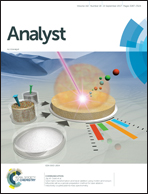Nanomaterial-based biosensors for measurement of lipids and lipoproteins towards point-of-care of cardiovascular disease
Abstract
Cardiovascular disease (CVD) has become the primary cause of global deaths and inflicts an enormous healthcare burden on both developed and developing countries. Frequent monitoring of CVD-associated risk factors such as the level of lipids (e.g., triglyceride (TG) and total cholesterol (TC)) and lipoproteins (e.g., low-density lipoprotein (LDL) and high-density lipoprotein (HDL)) can effectively help prevent disease progression and improve clinical outcomes. However, measurement of these risk factors is generally integrated into an automated analyzer, which is prohibitively expensive and highly instrument-dependent for routine testing in primary care settings. As such, a variety of rapid, simple and portable nanomaterial-based biosensors have been developed for measuring the level of lipids (TG and TC) and lipoproteins (LDL and HDL) towards the management of CVD at the point-of-care (POC). In this review, we first summarize traditional methods for measurement of lipids and lipoproteins, and then present the latest advances in developing nanomaterial-based biosensors that can potentially monitor the risk factors of CVD at the POC.



 Please wait while we load your content...
Please wait while we load your content...